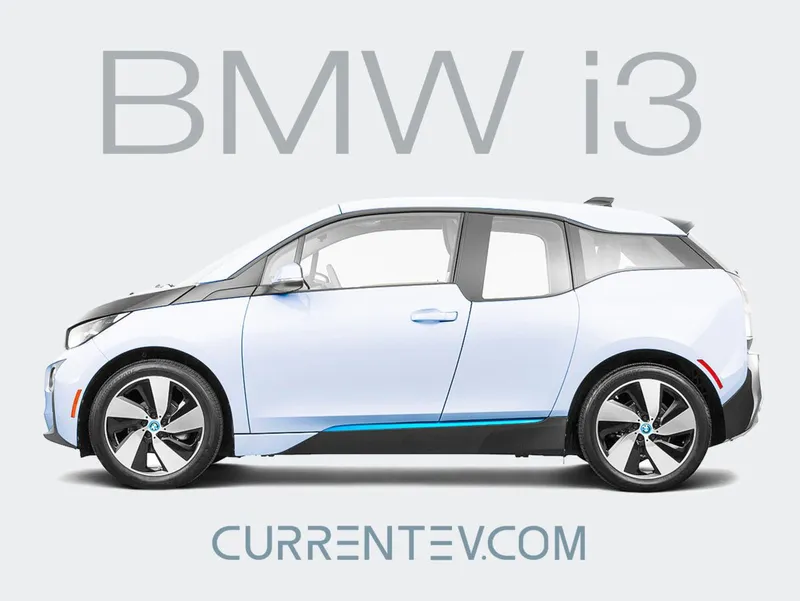
Driving dynamics, advanced high-tech and futuristic styling make the BMW i3 one of the most desirable EVs on the market
With its avant-garde, cutting-edge looks, aerodynamic design and electric efficiency, the BMW i3 provides a major dose of appeal on both a visual and emotional level. Depending on whom you ask, it’s either dorky-looking, or space-age and strikingly attractive. One thing’s for sure: this isn’t your average Bimmer: this break from the past can’t be mistaken for any other EV on the road.
The i3’s many desirable qualities include a pure electric version that delivers more than 80 miles. Adding an optional range-extending small gas engine can double that distance to 160 miles. The 125-kilowatt electric motor driving the rear wheels generates 170 horsepower and 184 pound feet of torque, which allows the i3 get to 60 mph in 7.2 seconds. The BMW concept was to add a very small gasoline tank providing fuel to be used occasionally, translating 1.9 gallons of petrol into an additional 60 to 80 miles beyond the 80 miles provided by the electric battery.
Mounted flat in an aluminum drive module, the i3’s 22-kilowatt-hour 450 pound lithium ion battery pack works with the car’s lightweight carbon fibre structure to push efficiency to 4 miles per kilowatt-hour, the high end of EV capability. EPA-assigned numbers of 138 MPGe city, 111 hwy and 124 combined mileage – from the pure EV version – make the i3 one of the most efficient electrics on the road.
Thanks to an active liquid thermal management system, which keeps the i3’s battery pack close to a constant 70 degrees Fahrenheit, hot and cold temperatures don’t have an extreme impact on its range, though drivers living in very cold climes indicate there’s a loss of range during winter months. This can be prevented by pre-conditioning the car before use.
The i3’s interior puts EV competitors to shame. A combination of quasi-Scandinavian design, Teutonic attention to detail, a sculpted wood dashboard and a “floating” navigation monitor feels gorgeous, upscale and futuristic. BMW uses first-rate materials to promote sportiness and luxury-brand panache. Oliver Walter, a BMW i3 project manager says: “The BMW i3 is about the exterior size of a BMW 1-series, but has the interior roominess of a 3-series, and the quality of materials and luxury features of a 5-series.” Taller than many other cars (62.1 inches high), the i3’s 4-person high seating position has been compared to that of an SUV. Its carbon fiber body is as strong as steel but it’s 50% lighter.
The i3’s combo SAE Ji772 connector allows it to charge from any Level 2 AC home charging stations. A Quick charge station will replenish the car’s battery pack to 80% full in 20 to 30 minutes.
Standard i3 features include adaptive cruise control, automatic climate control, heated front seats, HD Radio, Bluetooth, a USB port, navigation, satellite radio and BMW's iDrive infotainment system. Available features include front and rear parking sensors, a parallel park assist, a rearview camera and a 12-speaker Harman Kardon surround-sound audio system. The 6.5-inch display system is nicely designed: menus are relatively easy to process, though some consider the small monitor a drawback, as the trend is towards larger monitors.
The i3 has two questionable designs, which BMW will have to fix in the future. Hidden behind the steering wheel, the “on” button to start the vehicle is in a difficult position for fingers to reach. Drivers quickly get used to this but an easier location would be more desirable. The i3’s rear hinged coach doors open only if the front doors are opened first. And the back seat side windows don’t open.
The i3’s trunk contains 13 cubic feet. This is more room than i3 rivals, Chevrolet Spark and Volt, though less than rival Nissan Leaf. With four passengers, there’s only 9.18 additional cubic feet in the cabin space for cargo. When the rear seats of the hatch are folded down, an additional 29 cubic feet of space are made available.
The i3 is the first dedicated EV from a well-established luxury brand; its official pricing relegates it to the high end of the electric vehicle market and makes it one of the most expensive pure electric 4-seaters. Reducing the cost with a $7,500 tax credit and a $2,500 reimbursement check from the State of California brings the price way down for California residents. CURRENT relationships with Los Angeles dealers decrease the price even further, making it possible to lease an i3 for almost the same amount as a Nissan Leaf or a Chevrolet Volt.
Recent Posts
- The 2022 Audi Q4 e-Tron SUV combines performance, practicality and luxury
- Ford's 2022 F150 Lightning All-Electric Truck is in high demand
- Legendary Audi performance is at the heart of the 2022 Audi e-tron GT and its RS sibling.
- Meet the Lexus RZ 450e – the luxury brand’s 1st EV
- The 2022 GV60 is Genesis’ first all-electric vehicle

